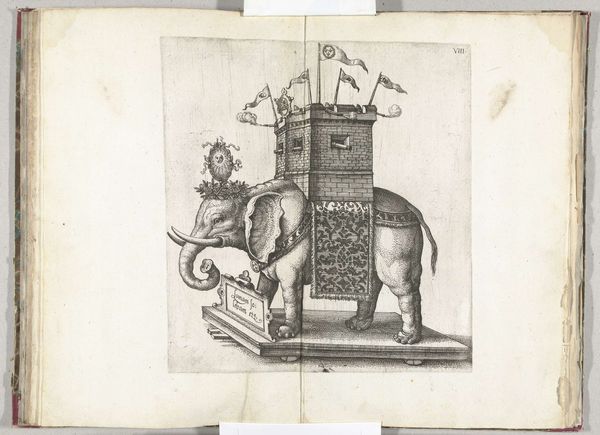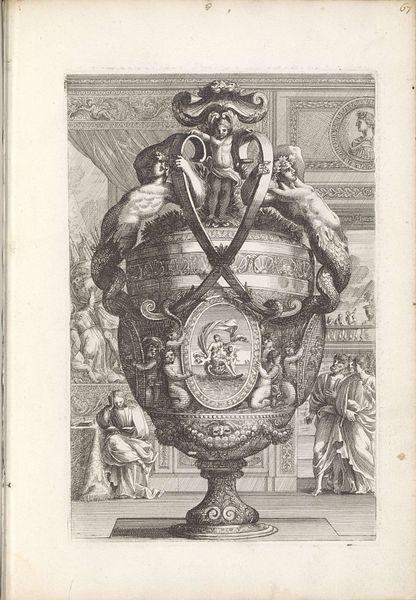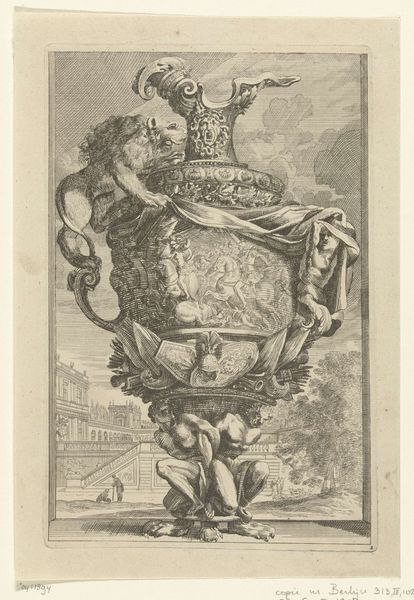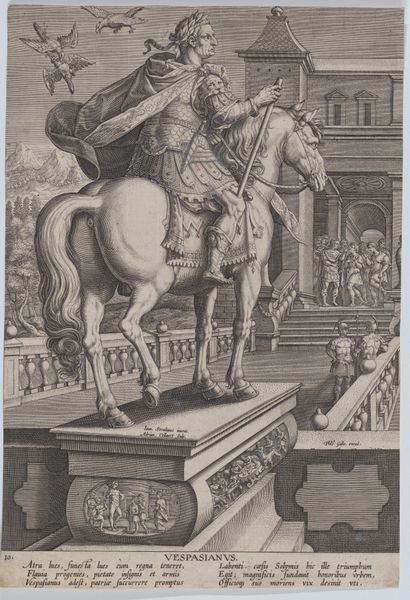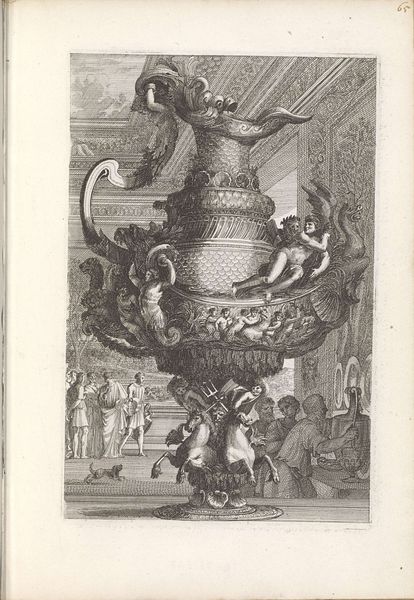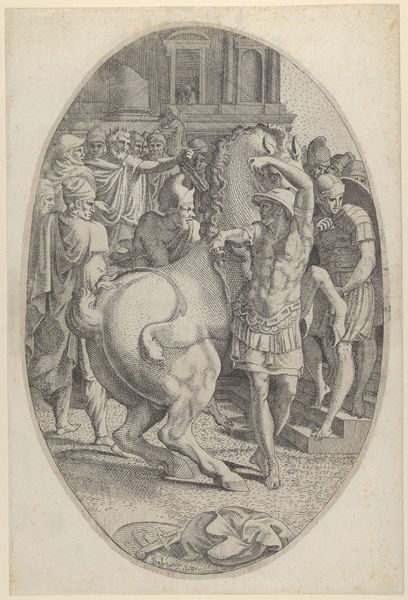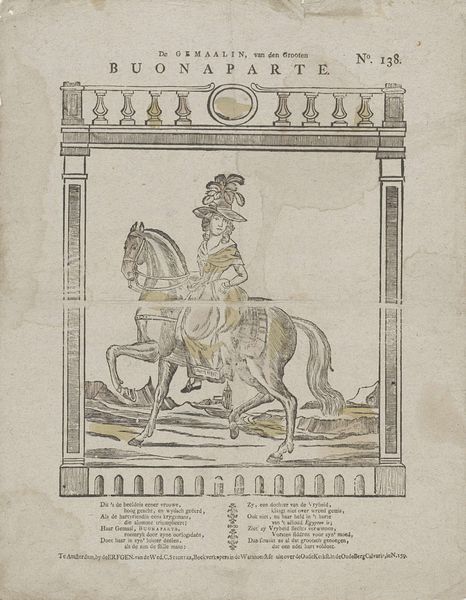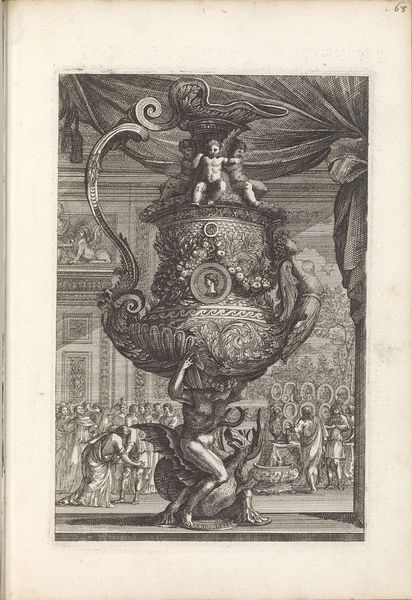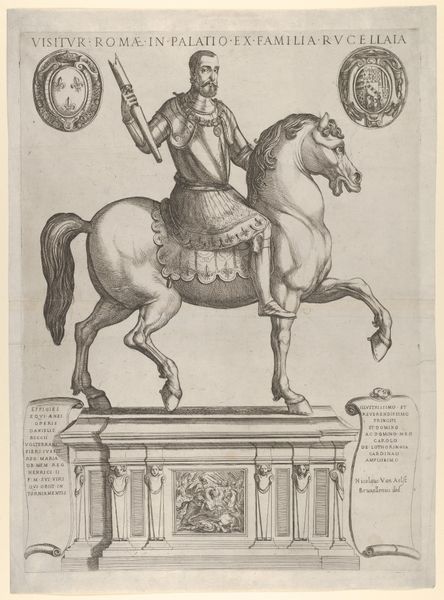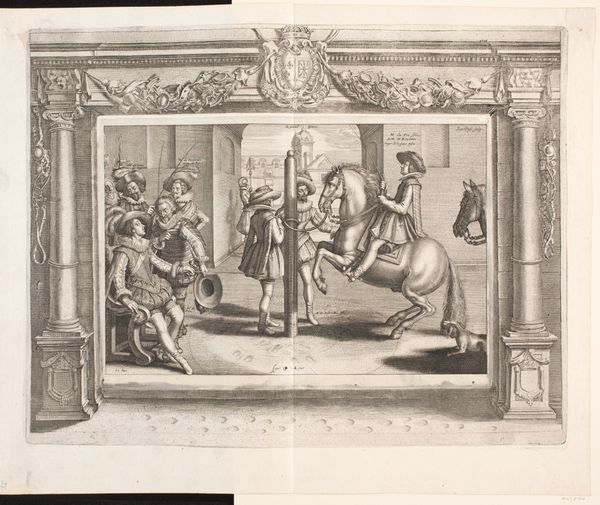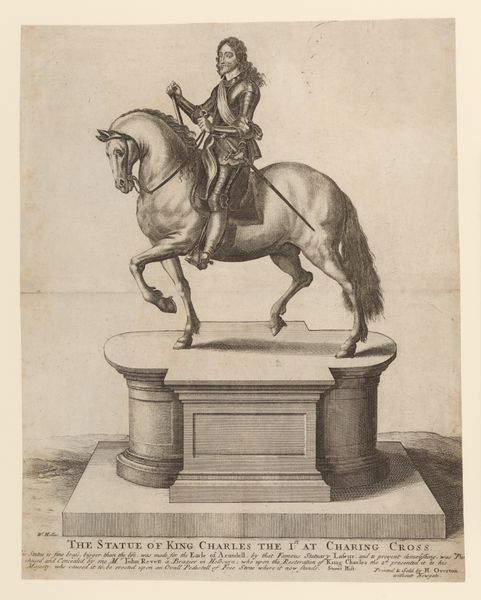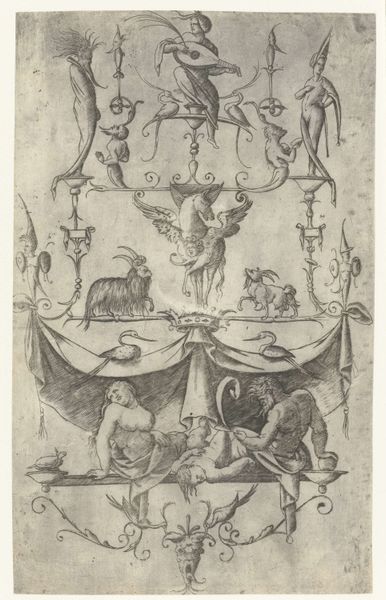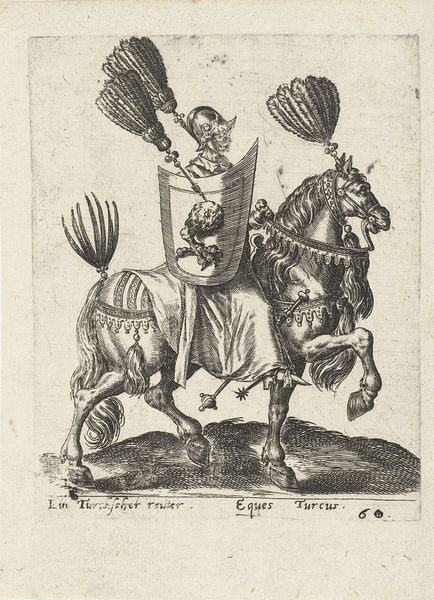
print, engraving
allegory
baroque
coloured pencil
cityscape
engraving
Dimensions: height 336 mm, width 209 mm
Copyright: Rijks Museum: Open Domain
Editor: This engraving from 1599, called "Praalwagen met een olifant" or "Processional Wagon with an Elephant", is just fascinating! It depicts a giant elephant in what looks like a European city, carrying figures on its back. The whole scene has such a strange, almost dreamlike quality. What stands out to you when you look at this? Curator: This print presents a fascinating intersection of power, spectacle, and colonial encounter. The elephant, a symbol of the exotic 'other', is paraded through a European cityscape, suggesting the appropriation and subjugation of distant lands. Note the figures on its back – are they symbols of authority, perhaps even of divine right? The torch she carries is also intriguing. Editor: The torch looks like it could have several different meanings, like knowledge, or victory. I see what you mean about the subjugation; there's something almost unsettling about reducing this enormous animal to a spectacle. Curator: Precisely. Consider the inscription on the carriage; it invites us to reflect on who is doing the celebrating and at what cost. These processions weren't just entertainment. They functioned as powerful assertions of dominance, reinforcing hierarchies based on race, class, and geographical origin. Does this image now shift for you, when viewing it in that light? Editor: It completely reframes the image! I was initially struck by the spectacle, but now I see a more complex narrative about the relationship between Europe and the rest of the world, how that was constructed, and how it has been presented to us through art and visual culture. Thanks, I hadn’t considered that aspect initially. Curator: Art provides us an excellent portal through which we are able to assess these histories. By engaging with the past, we become more critically conscious of our present.
Comments
No comments
Be the first to comment and join the conversation on the ultimate creative platform.
